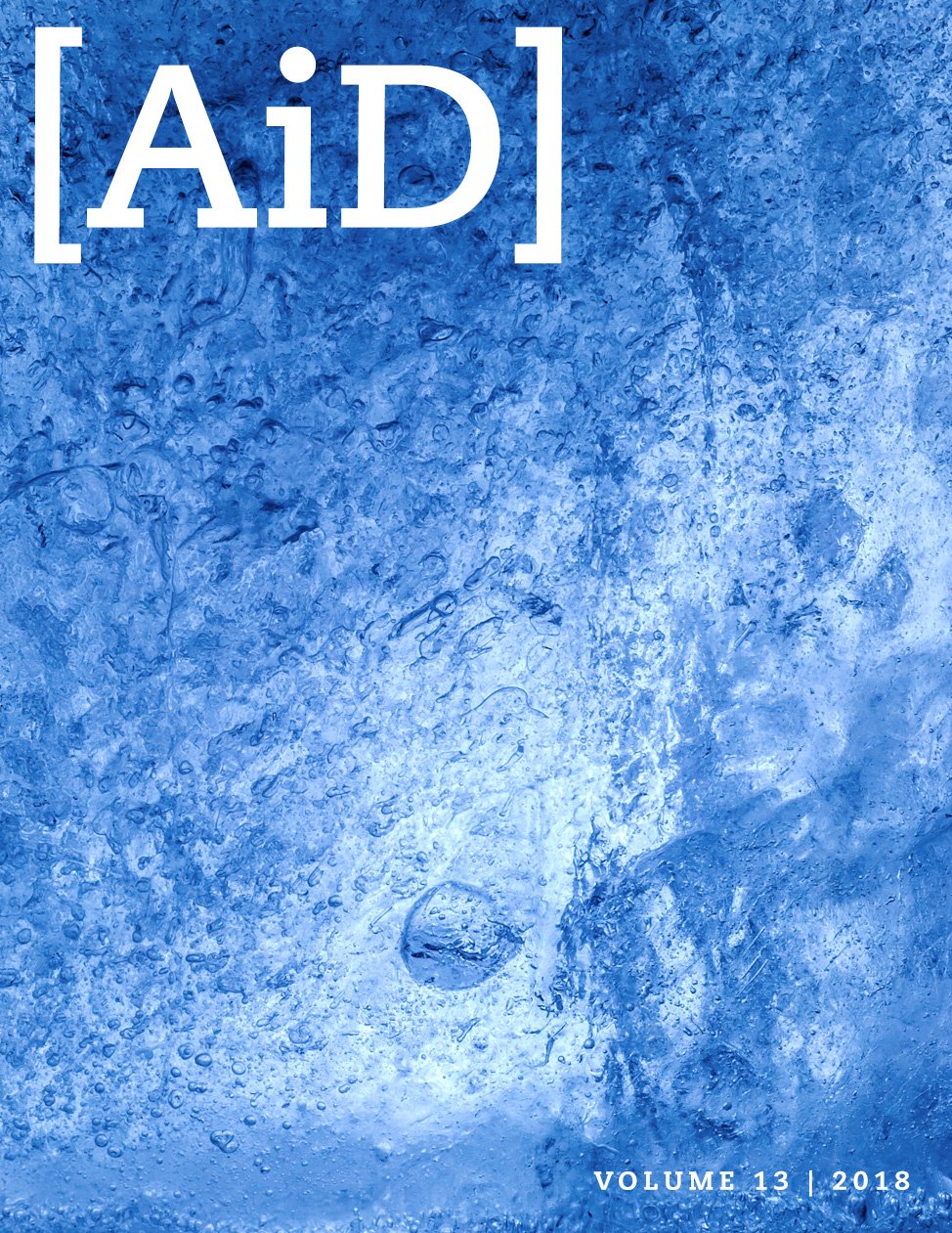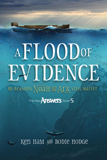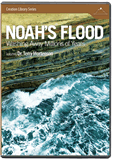
Noah’s Flood: a Unique, Historical, Yearlong, Global Catastrophe
Abstract
Today, most Christians around the world (including seminary and Christian college professors) accept the idea of millions of years of earth history. In doing so, they either ignore Noah’s flood or reject its globality or historicity and think it has nothing to do with the question of the age of the earth. But the flood is critical to that question. Here I present the overwhelmingly clear biblical evidence that Noah’s flood was a global catastrophe that destroyed all the land animals, birds, and people not in the ark, and by implication ripped up all the vegetation on the land, killing millions of sea creatures, and buried many of those plants, animals, and people in sediments that now cover the earth in the form of sedimentary rocks layers filled with fossils. The flood is a vital reason for concluding that the earth is only a few thousand years old.
Introduction
Noah’s flood is very much in the public mind these days. In 2012 Johan Huibers opened a full-size, floating Noah’s ark to the public in the Netherlands.1 In March 2014, Noah, the biblically inaccurate movie starring Russell Crowe, played in theaters across America.2 In July 2016, AiG’s Ark Encounter opened, and people from all over the world have poured in to visit.
Did the flood really happen? Or is it a myth? Was it global? Or was it a local flood in the Mesopotamian Valley of the Tigris and Euphrates rivers (modern-day Iraq) and just described in exaggerated language (hyperbole)? Was it a peaceful flood? And does it matter anyway?
These are good questions and important ones. Today, most Christians around the world (including seminary and Christian college professors) accept the idea of millions of years of earth history. In doing so, they either ignore Noah’s flood or reject its globality or historicity and think it has nothing to do with the question of the earth’s age. But the flood is critical to that question.
Consider these lines of evidence to support the conclusion that Noah’s flood was a unique, historical, global, catastrophic flood that changed the world.
At-a-Glance
- The flood really happened in history.
- When the flood reached the highest level, there was no dry land anywhere.
- The flood catastrophically destroyed and rearranged the surface of the earth.
- The flood was unique, like no other flood.
- The flood left massive geological effects.
The Historicity of the Flood
There is abundant evidence that this flood really happened in time-space history.
The Toledoths of Genesis
Toledoth is the Hebrew word translated as “generations” or “account” in the phrase “these are the generations of” (or “this is the account of”). This toledoth phrase appears 11 times3 in the book of Genesis, and nearly all Bible scholars agree that these phrases tie the whole book together as a unity. Genesis is one historical narrative that lays the foundation for the historical accounts in Exodus, Numbers, Joshua, and through the rest of the Old and New Testament. The Bible is the account of God’s sovereign acts of creation, judgment, and redemption in time-space history, and that history begins in Genesis 1:1.
The Character of Genesis 1–11
The flood account in Genesis 6–8 reads like a simple diary, recording what happened on specific days of Noah’s life during the yearlong flood. But this is part of the whole historical narrative of Genesis 1–11, with real time (numbered days of creation, evening and morning and night, chrono-genealogies of Genesis 5 and 11 giving real ages of people), names of real people, and names and descriptions of geographical locations (e.g., Garden of Eden and nearby rivers and lands, Cain’s city (Enoch), mountains of Ararat, Tower of Babel).
The View of Jesus
In predicting his own second coming, Jesus clearly believed in the historical reality of Noah, the ark, and the flood. And he said that first judgment is a warning of the judgment to come when he returns.
For as were the days of Noah, so will be the coming of the Son of Man. For as in those days before the flood they were eating and drinking, marrying and giving in marriage, until the day when Noah entered the ark, and they were unaware until the flood came and swept them all away, so will be the coming of the Son of Man. (Matthew 24:37–39)
Since the second coming of Jesus will have a global impact, we have good reason to conclude that Jesus believed the flood was global. To doubt the historicity of the flood account is to accuse Jesus of ignorance or error, hardly the right attitude for Christians to have of their Lord.
The View of the Biblical Writers
All the biblical authors who mention Noah and the flood clearly treat the Genesis account as straightforward literal history. Peter affirms that only eight people were saved on the ark (1 Peter 3:20) and that the account of the flood is just as historical as the account of the judgment of Sodom and Gomorrah (2 Peter 2:4–9). He also said that scoffers, who deny the second coming of Jesus and the accompanying global judgment, do so because they hold to a philosophy (“all things continue as they were from the beginning of creation”) that causes them to reject the supernatural creation of the world and the judgment of the flood (2 Peter 3:3–7).
Luke 3:23–38 traces the genealogy of Jesus from his supposed father (Joseph)4 all the way back to Adam. If every man in that genealogy (and the Bible’s recorded events associated with his life) were not fully historical, then the Bible is in error or Jesus is descended from a myth and therefore not fully human. In Isaiah 54:9 God says through the prophet that he will withhold judgment against Israel just as he promised after the flood to never send another flood on the earth again (Genesis 9:8–17). Ezekiel 14:14 shows that the prophet believed Noah was just as historical as Job and Daniel, who was a contemporary of Ezekiel.
Flood Traditions Around the World
All over the world, even among people groups that didn’t or don’t live near the ocean, there are stories about a great flood in which only a few people were saved. Many details of the Genesis account are preserved or alluded to in these uninspired, corrupted accounts from descendants of the people who migrated from the Tower of Babel after the flood.5
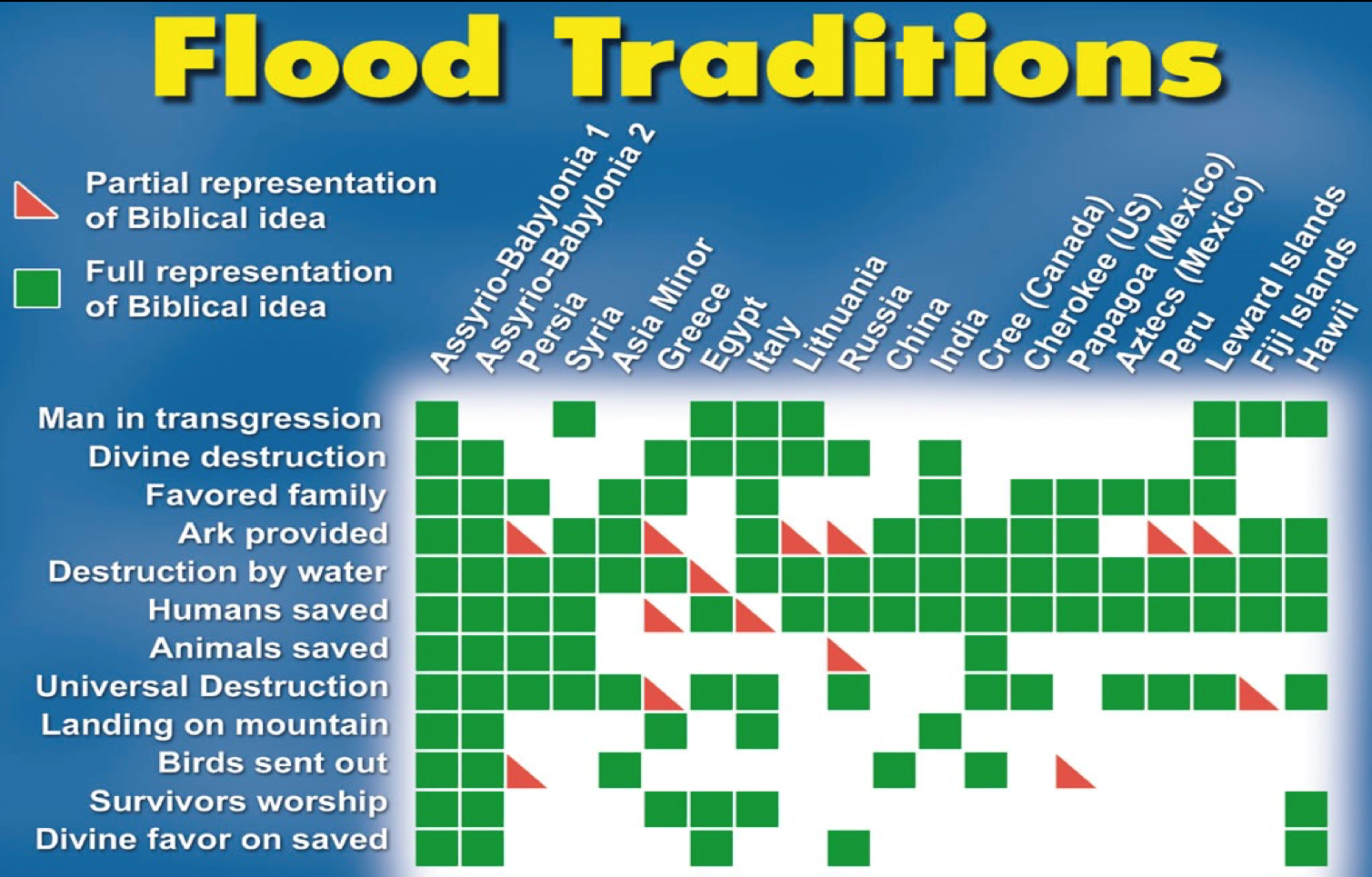
The Globality of the Flood
When the waters reached the highest level, there was no dry ground anywhere on the earth. All the pre-flood land was at least 15 cubits (approx. 25 feet [7 meters]) under water (Genesis 7:20).6
The Purpose of the Flood
God says he sent the flood to destroy not only all people outside the ark, but also all the land animals and birds outside the ark and even the surface of the earth itself. “I will blot out man whom I have created from the face of the land, man and animals and creeping thing and birds of the heavens, for I am sorry that I have made them. . . . I will destroy them with the earth” (Genesis 6:7, 13).
And it wasn’t just a subset of all the land creatures that would be destroyed, as some old-earth Christians assert in arguing for a local flood. Genesis 7:21–22 is crystal clear that “all flesh” perished. Outside the ark “all in whose nostrils was the breath of life” died.
Only a global flood would accomplish that purpose. A local flood in the Mesopotamian Valley would not affect any animals or birds in North and South America, Europe, Africa, Russia, India, China, or Australia.7 Birds are mentioned 19 times in the flood account (Genesis 6:7–9:10), which is emphatic. But they could easily have flown out of the flood zone if the flood had been localized in Mesopotamia.
Universal Terms
Over 60 times in Genesis 6–9, we see the universal terms “all,” “every,” “under heaven,” “in whose nostrils was the breath of life,” and so on. The word translated “all” or “every” is the Hebrew word col. Certainly, the Old Testament does contain cases where col does not mean literally “all,” as the context in each case makes perfectly clear. But as always, context must be the determinant. We can’t just decide that the “all” here is figurative because it fits with a pre-established idea. Rather, the extreme repetition of not just “all” and “every” but these other universal phrases in the flood account makes it clear that God was being emphatic about the global extent of the flood.
The Height of the Flood
Genesis 7:19–20 tells us that during the flood “the waters prevailed so mightily on the earth that all the high mountains under the whole heaven were covered. The waters prevailed above the mountains, covering them fifteen cubits deep.” Since water seeks a level plane, covering all the pre-flood mountains8 would require a global flood. To have a local flood that covered all the mountains of Ararat but extended no farther than the Mesopotamian Valley would require a miraculous intervention by God (blocking every mountain pass and the northwest end of the Persian Gulf), for which there is no biblical basis in Genesis 6–9 or any other Bible passage referring to the flood.
The Duration of the Flood
From the onset of the flood in the 600th year of Noah’s life (Genesis 7:11) until the post-flood land was dry enough for Noah, his family, and the animals to disembark (Genesis 8:13–14) was 371 days, assuming the flood narrative uses a 360-day year. The rising floodwaters did not cover the whole earth until sometime between the 40th and the 150th day, and it took 165 days for the waters to retreat. No local flood could last that long.
The Purpose of the Ark
God did not tell Noah to build an ark to save some animals so he could start a farm after the flood. Genesis 7:1–3 states the purpose clearly: “to keep their offspring alive on the face of all the earth.” If the flood were only in the Mesopotamian Valley, there would be no need to take onto the ark two of every kind of land animal (and seven, or seven pairs,9 of the clean kinds and flying creature kinds). Animals and birds outside the flood zone would not need to be saved. And animals and birds in the flood zone could easily escape before the waters reach their highest level. Even if all the animals and birds in the flood zone perished, others outside that zone could repopulate the area after the flood. As for Noah and his family, the ark was a ridiculous building project if the flood were local. God could have told him to go on a long vacation to Europe or Africa (which in a “local flood” view were essentially the same as today).10 Only a global flood fits with the purpose of the ark.
The Volume of the Ark
The ark was 300 cubits long, 50 cubits wide, and 30 cubits high, which translates (using a royal cubit) to about 510 feet by 85 feet by 51 feet.11 With three decks, it had the volume capacity equivalent to about 450 semi-truck trailers, far too large to save some animals from the region and eight people from a local flood, but necessary to save the approximately 6,700 land animals and birds that God brought to the ark, plus have room for the required foodstuffs for the people and animals.12
The Landing of the Ark
The Bible also tells us that the ark landed very near the top of one of the highest mountains in the mountain range13 of Ararat (a region in eastern Turkey and northwestern Iran) and that the floodwaters receded for over two months before Noah could see any other peaks (Genesis 8:4–5). Only a global flood could lift the ark to that many thousands of feet above sea level and take that long to recede before other peaks were visible.
The Rainbow Promise
In Genesis 9:8–17, God promised not just Noah and his descendants, but also the animals and all their offspring and the earth itself, that he would never again send a flood to destroy the earth. And the rainbow is the sign of that covenant. If the flood were local, then God has broken his covenant countless times. There have been many local floods that have killed some humans and some animals and destroyed some of the earth. In this case the rainbow would be no sign at all. Only a global flood fits the rainbow promise.
The Commands to the Post-Flood Animals and Man
In Genesis 8:17 and 9:1, God commands the land animals, birds, and people leaving the ark to reproduce and fill the whole earth. Given what Genesis 4 reveals about man’s inventiveness and explorations (to produce musical instruments and develop mining and metallurgy), and the fact that Noah and his sons knew how to build a very large boat that could survive the flood, it is most unreasonable to think that pre-flood people were only living in a very localized area so that a local flood would destroy them all. It is utterly ridiculous to think that there were no animals and birds living outside the flood zone. Only a global flood makes sense of these commands.
The Origin of All Nations
Closely related to the previous point, Genesis 10:32 says that all post-flood people can trace their ancestry ultimately back to the eight people on the ark (and through them back to Adam and Eve, of course).
The Catastrophism of the Flood
The violent nature of the flood is seen in several ways.
The Purpose of the Flood
The flood was an expression of God’s wrath against sinful humanity. If the purpose of the flood was to destroy not only all the land animals, birds, and people outside the ark, but also the surface of the earth itself, it must have been catastrophic. Given the description of the flood, it is safe to assume that all the vegetation and man-made structures on the land were also destroyed by the floodwaters.
The Dimensions of the Ark
Scientific analysis, including lab experiments, shows that the ark’s dimensions would have provided an ideal blend of stability, strength, and comfort for its passengers, even in the roughest seas we can reasonably imagine during the flood.14
The Source and Action of the Floodwaters
Genesis 7:11 reveals the violence of the flood, which unquestionably implies tremendous geological effects. The verse says that “all the fountains of the great deep burst forth.” Careful attention to the use of these words in the rest of the Bible shows that this phrase testifies to volcanic and earthquake activity all over the earth, especially on the ocean floor, during the first 150 days of the flood, till those fountains were closed (Genesis 8:2).15 A look at a map of the present ocean floor reveals many earthquake fault lines and volcanic cones. Such movements of the earth’s crust would trigger many tsunamis around the world, producing incredible erosional and sedimentary effects, as recent tsunamis in Japan and elsewhere help us to only imagine. The global, nonstop torrential rain for the first 40 days (Genesis 7:12) and then the waters’ domination of the earth till the 150th day (Genesis 8:3) would have also produced destructive mudslides and erosion. It should be noted however that waters would not be violent all the time everywhere. There would be relative calm in places while in other places great violence. And the waters didn’t cover the whole earth on the first day. The waters rose to increasingly cover the land until complete conquest happened sometime between the 40th and 150th day.
Genesis 8:3–7 also reveals that in the recessional phase of the floodwaters there would have been an enormous amount of erosion and sedimentation. Our English Bibles tell us in verses 3 and 5 that the waters were “receding steadily” or “receding continually.” But the Hebrew wording indicates that in so doing, the waters were “going and returning” or “coming and going.” The verbal construction is very similar to that describing the raven that was sent out from the ark (verse 7). It was “flying to and fro” or “flying here and there” (Hebrew: flying out and returning). The waters didn’t drain peacefully like pulling the plug in the bathtub. They were moving back and forth, and moving waters erode and carry sediments to be deposited elsewhere.
The Lifespan of Post-Flood People
The patriarchs before the flood lived an average of 900 years. But the ages decline exponentially after the flood. Whether this was a result of significant environmental factors or genetics related to the bottleneck of the human population being reduced to eight people at the flood, or both, this radical decrease in human lifespan points to a catastrophic flood that changed the world permanently.
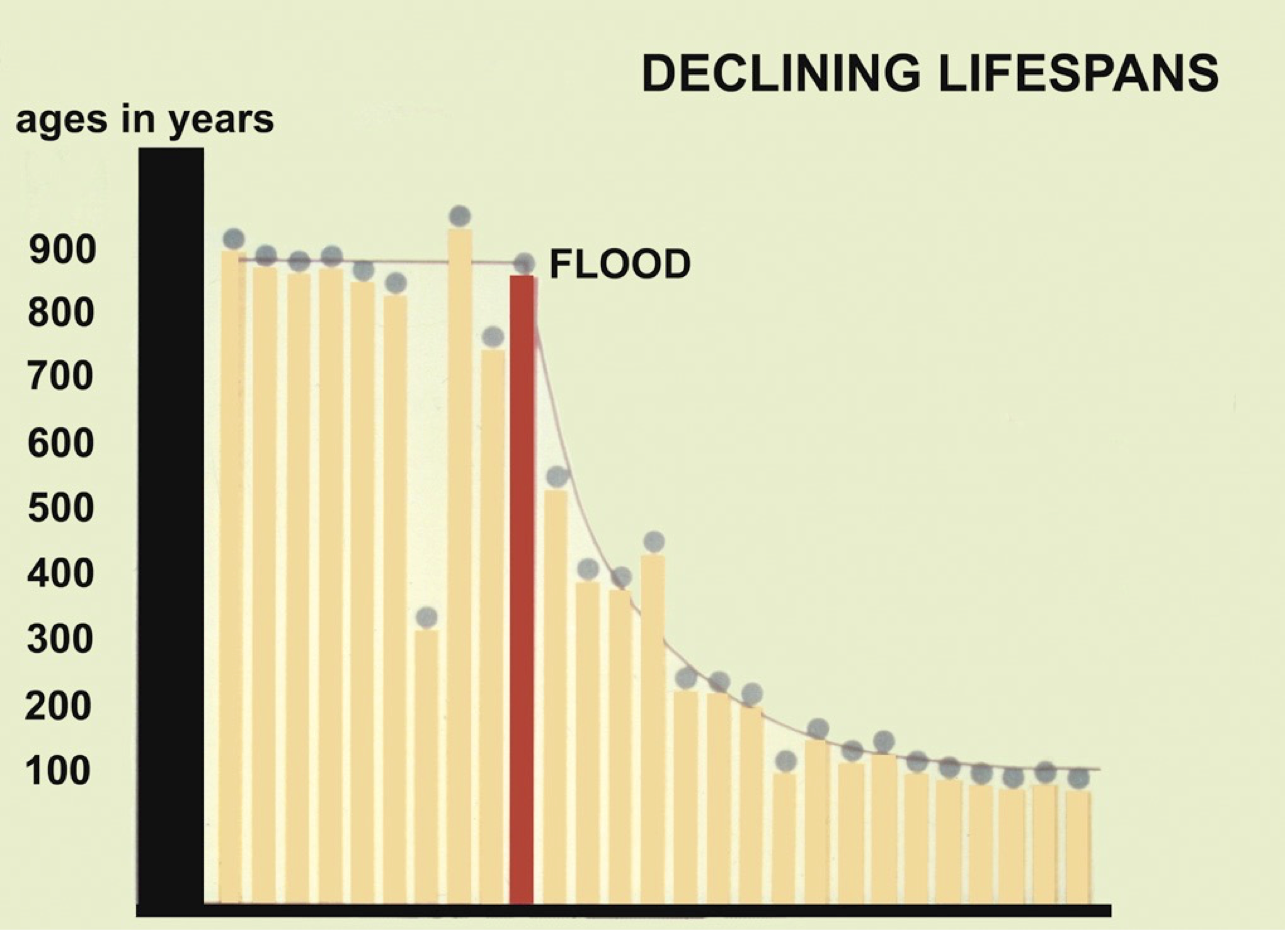
The Garden of Eden Can’t Be Found
Scholars have come up with many suggestions of where the Garden of Eden was located in the Middle East. But to do so they have to ignore the details of Genesis 2:10–14 and the kinds of evidence for the globality and violence of the flood presented here. As can be seen in the picture below, the Tigris and Euphrates don’t split from a source river (as Genesis 2 describes), but rather start in two different places in the mountains of Turkey and then merge together close to the Persian Gulf. The other rivers mentioned in Genesis 2:10–14 (Pishon and Gihon) are nowhere to be found. And no river flows “around the whole land of Cush” (Ethiopia). We will never find the garden of Eden because it, like the rest of the topography of the pre-flood world, was completely destroyed and buried by sediments. Although the names are the same, the Tigris and Euphrates of Iraq are not the rivers mentioned in Genesis 2, just as Birmingham in Alabama is not the same city as Birmingham in England, and Moscow in Idaho is not the same city as Moscow in Russia, and the Severn River in Maryland is not the River Severn in England and Wales.

The Uniqueness of the Flood
There are several Hebrew words translated “flood” in the Bible. All but one of these words refer to a localized flood. The one unusual word, mabbul, is only used in Genesis 6–11 (12 times, all referring to Noah’s flood) and in Psalm 29:10. The latter verse surely is referring to Noah’s flood since that event clearly revealed God sitting as absolutely unrivaled King over all his creation. This was a unique flood.16
The Geological Effects of the Flood
Elsewhere you can learn about the massive geological evidence for Noah’s flood and a young earth. Noah’s flood truly does wash away the idea of millions of years. Most of the earth’s sedimentary rocks and fossils were formed by the flood. But the vast majority of geologists (including many Christian geologists) are blind to this geological evidence. They are looking at it but can’t see it because they are wearing antibiblical philosophical “glasses”: their thinking is controlled by naturalistic, uniformitarian assumptions that have controlled geology for the last 200 years.17 An excellent, well-illustrated introduction to the evidence for teens and adults is John Morris’ The Young Earth. For much more depth, get Andrew Snelling’s two-volume, 1,566-page work Earth’s Catastrophic Past. Dr. Snelling has also produced an excellent series of DVDs on geology and the flood as well as Evidence of Rapid Fossilization and Rock Strata, Fossils, and the Flood.
Conclusion
The Bible could not be clearer. Noah’s flood was a unique, historical, catastrophic, global flood that destroyed the surface of the earth and all the people, land animals, and birds not in the ark with Noah’s family. By implication it ripped up all the land vegetation and killed billions of sea creatures. Given what we know about modern catastrophic floods, the Genesis flood would have buried billions of creatures in sediments that would have been fossilized as those sediments turned to stone.
The flood is the key to earth’s history. For 200 years most of the church has ignored or rejected God’s inerrant eyewitness account of the flood, because Christians have been deceived by the claims of secular geologists about millions of years. Those Christians have been unaware that the old-earth story is based on antibiblical, philosophical (naturalistic, uniformitarian) assumptions controlling the interpretation of the geological evidence.
As we have seen, the flood is also a sobering warning of the judgment to come. Jesus told us that just as surely as Noah’s flood came and people were not ready and so perished in that judgment, so too most people will not be ready when he comes again as King of Kings and Lord of Lords and Judge of all the earth. Just as there was no escape from the judgment of Noah’s day, unless a person put his life and complete trust in the ark, so there will be no escape from the future judgment, unless in this life a person puts his complete trust in a crucified and risen Jesus Christ.
Dear reader, are you ready for that judgment? Have you repented of your sins and put your trust in Jesus Christ’s substitutionary death and resurrection to save you from the wrath to come? He is the only ark of salvation. He said, “I am the way, and the truth, and the life. No one comes to the Father except through me” (John 14:6). And the Apostle Peter said, “There is salvation in no one else, for there is no other name under heaven given among men by which we must be saved” (Acts 4:12). If you have not trusted in him as your Lord and Savior, I urge you to do so today. None of us are guaranteed tomorrow.
But Christians who believe in millions of years and a local flood also need to repent of not believing God’s Word in this area. We dare not place the fallible ideas of secular geologists above the authority of God’s Word. God knows everything, was there during creation week and the flood, always tells the truth, and inspired the Scriptures to be written without error so that we could have an accurate record of history to understand him, our world and our place in it in relation to God. That history serves as the foundation for the message of salvation through the Messiah, the Lord Jesus Christ. Christians need to tremble at (trust) the words of God, rather than trembling at (trusting) the words of fallible, sinful human beings (Isaiah 66:1–5).
Footnotes
- Tim Hume, “Dutchman Builds Replica Noah’s Ark after Flood Dream,” https://www.cnn.com/2012/07/30/world/europe/johans-ark-noah-dutch/index.html, July 30, 2012.
- Based on a report from two AiG supporters who saw a rough cut of the movie in late 2013, Ken Ham blogged about the film in November 2013. After the film’s release, two AiG staff did a detailed review. Ken Ham later blogged about the film in “Aronovsky’s Noah—‘We Took the Bible at Its Word . . . .”
- Genesis 2:4, 5:1, 6:9, 10:1, 11:10, 11:27, 25:12, 25:19, 36:1, 36:9, 37:2.
- The lineage here is actually from Jesus’ mother, Mary.
- Tim Chaffey, “Humanity’s Shared History Reflecting the Truth of Genesis 1–11,” in Searching for Adam, ed. Terry Mortenson (Green Forest, AR: Master Books, 2016), 451–453.
- Ibid.
- In the “local flood” view, the pre-flood continents, geology, and topography were essentially the same as the post-flood surface features of the earth. But in the “global flood” view, of course, the pre-flood arrangement and appearance of dry land and the post-flood appearance were radically different.
- There is no reason to think that our modern mountain ranges existed before the flood. On the contrary, the Alps, Andes, Rockies, and Himalayan mountains are made of sedimentary rocks containing fossils. Those rock layers and fossils are the result of the flood and were tilted and thrust up in the recessional stage of the flood as Psalm 104:6–9 indicates.
- Bible scholars are in disagreement about the correct interpretation regarding the number of clean animals taken on the ark. See Ken Ham and Bodie Hodge, A Flood of Evidence (Green Forest, AR: Master Books, 2016), 213–215.
- See footnote 7.
- Using a long (or sometimes called “royal”) cubit (20.4 inches), that would be 155 m x 25.9 m x 15.5 m. For a discussion of the long vs. short cubit, see Ham and Hodge, A Flood of Evidence, 193–196.
- Ibid., 209–217.
- The Bible says “mountains [plural] of Ararat” (Genesis 8:4), not “Mount Ararat.” Scripture doesn’t say which mountain, and there are many reasons for thinking it was not Mount Ararat. See Andrew Snelling’s article “Is Noah’s Ark on Mount Ararat?”
- See the DVD Noah’s Ark: Thinking Outside the Box, featuring ark researcher Tim Lovett.
- The Hebrew word translated as “burst forth” in Genesis 7:11 is used in Numbers 16:31, Judges 15:19, and Zechariah 14:4 to refer to the breaking of rocks and minor or major earthquakes. And earthquakes often trigger volcanoes.
- The Greek word kataklusmos (from which we get the English “cataclysm”) is used in the New Testament only in reference to Noah’s flood (Matthew 24:38–39; Luke 17:27 and 2 Peter 2:5). The associated verb (katakluzomai) is also only used with reference to Noah’s flood (2 Peter 3:6).
- To understand how these powerful philosophical assumptions have been at work in geology, see my DVD lectures Millions of Years: Where Did the Idea Come from? and Noah’s Flood: Washing Away Millions of Years. For more in-depth discussion of these assumptions, see my article “The History of the Development of the Geological Column” and my book The Great Turning Point.
Recommended Resources

Answers in Genesis is an apologetics ministry, dedicated to helping Christians defend their faith and proclaim the good news of Jesus Christ.
- Customer Service 800.778.3390
- © 2024 Answers in Genesis

